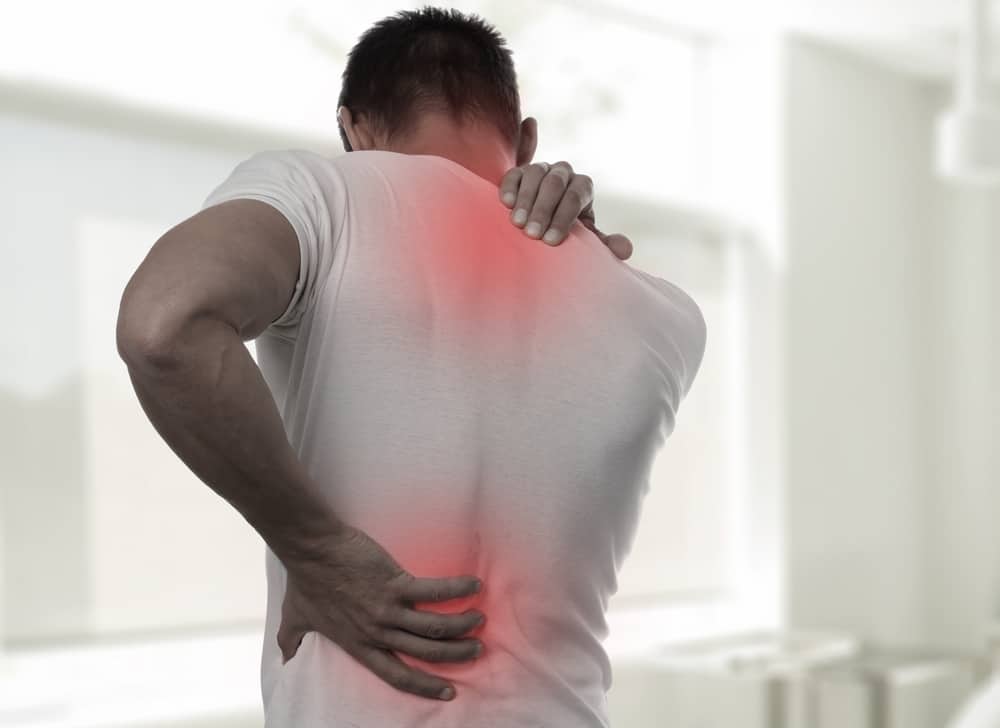Tips to stay active when you are experiencing pain

Exercise reduces pain by building muscle strength and flexibility, reducing fatigue, lowering pain sensitivity and reducing inflammation. Doctor Lorcan McGonagle
of LMcG Orthopaedics shares his tips to stay active when you are experiencing pain.
How do the body and mind respond to pain?
The body-mind response to pain is a self-limiting cycle. When an individual experiences pain, the natural response is to do anything to reduce the discomfort in accordance with the “fear-avoidance” model of pain. For many people, this means rest and relaxation. Unfortunately, this response can initiate a vicious cycle as too much rest can be detrimental and result in atrophy – or wasting of the muscles – which can lead to further health problems. When we stop, rest or avoid movement, we feel less afraid, and that sense of relief reinforces the decision to stop the activity. The cycle eventually increases the level of disability and distress. While these responses are understandable, the research points to the benefits of physical activity in managing pain.
How does exercise reduce pain?
Studies show many general health benefits of physical activity. Benefits include boosts to brain health, reduced disease burden, weight loss and stronger bones and muscles. Exercise reduces pain by building muscle strength and flexibility, reducing fatigue, lowering pain sensitivity and reducing inflammation. Research suggests that exercise may even be effective in reducing pain for difficult-to-treat conditions like fibromyalgia and neck/shoulder pain.
Tips to stay active when you are experiencing pain
While being physically active can lead to overall health benefits and management of chronic pain, it is important to listen to your body and avoid overdoing it. If in doubt, chat to your doctor or physiotherapist to see what exercises and modifications are best for your age, fitness level and medical issue/s.
Exercises to consider include:
Walking
Walking around your neighbourhood is a good endurance activity. Even if you can only manage to walk around the block or use a four-wheel walker, you are taking positive steps to improve your cardiovascular fitness and muscle endurance.
Swimming
Even if you can only manage using a kickboard, swimming is an excellent low-impact activity that builds endurance, muscle strength and cardiovascular fitness. Swimming also helps you maintain a healthy weight, healthy heart and lungs.
Bike riding
Health benefits of cycling include increased cardiovascular fitness and muscle strength, along with improved flexibility and joint mobility.
Household chores
Tasks around the house like sweeping, vacuuming, dusting and gardening are beneficial to health. Research shows that older adults who continue to perform household chores have better cognition, attention span and physical strength compared to those who no longer do their own home tasks. Housework in older adults is also linked to a decreased risk of falls.
Lifting household items
Strengthening exercises help to prevent osteoarthritis and frailty by stimulating the growth of muscle and bone. If you are unable to walk, consider seated strength training exercises. Filled water bottles make great dumbbells. Start with small bottles before moving on to 1L or 1.5L bottles. You can also reuse soap bottles or juice cartons. Avoid glass and make sure you wash them first.
Seated strength training exercises
Whole body chair exercises help with strength building. Try these 30-minute seated exercises which work the whole body.
Exercise bands
You can do a seated chest press using resistance bands. While bodybuilders opt for dumbbells, using resistance bands is just as effective for engaging the pecs, biceps and triceps. Try this 15-minute resistance band workout.
Flexibility activities
Activities that lengthen and stretch muscles can help prevent injuries, back pain, balance problems and stiffness. A well-stretched muscle more easily achieves its full range of motion. Flexibility activities include tai chi, yoga, bowls (indoor or outdoor), mopping, vacuuming, stretching exercises, dancing.
A healthy lifestyle can affect orthopaedic surgery outcomes
Are you a diabetic or overweight? Perhaps you are a heavy drinker or smoker? The better the control of your habit and health condition, the better your chances of an excellent surgical outcome. At LMcG Orthopaedics, Doctor Lorcan McGonagle provides a range of orthopaedic surgeries and treatments. Dr McGonagle’s specialties include knees, shoulder, elbow, wrist and hand, hip, foot and ankle.
If you have a question for Dr McGonagle and his Geraldton team, please get in touch with the clinic today on 08 9921 4847. LMcG Orthopaedics is in Suite 6, St John of God Specialist Centre, 12 Hermitage Street, Geraldton. Click here to make an appointment.
References
- Grady, P. A., & Gough, L. L. (2014). Self-management: a comprehensive approach to management of chronic conditions. American Journal of Public Health, 104(8), e25–e31. https://doi.org/10.2105/AJPH.2014.302041
- Belavy, D. L., Van Oosterwijck, J., Clarkson, M., Dhondt, E., Mundell, N. L., Miller, C. T., & Owen, P. J. (2021). Pain sensitivity is reduced by exercise training: Evidence from a systematic review and meta-analysis. Neuroscience and Biobehavioral Reviews, 120, 100–108. https://doi.org/10.1016/j.neubiorev.2020.11.012
